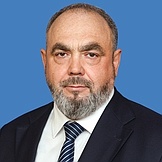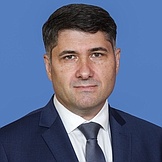Regional flags and emblems


PROFILE
Established 10 December 1930
Capital Salekhard
The Yamal-Nenets Autonomous Area is part of the Urals Federal District
Area 769,300 sq km
Population 521 700 (2025)
Ethnic groups
(2020 National Census, %)
Russian – 62,89
Nenets – 8,92
Tatar – 4,70
Ukrainian – 4,53
Khanty – 2,48
Azerbaijani – 1,66
Bashkir – 1,52
Kumyk – 1,20
Other – 12,10
Administrative divisions (2024)
Municipalities – 7
City districts — 6
Geography and climate
The Yamal-Nenets Autunomous Area is located in the Arctic zone in the northern part of the West Siberian Plain, with half of it lying inside the Arctic Circle.
The northern boundary of the region, washed by the Kara Sea, has a length of 5,100 km and is part of Russia’s national border (900 km). In the west, along the Ural Mountains, the region borders on the Nenets Autonomous Area and the Komi Republic, in the south on the Khanty-Mansi Autonomous Area, and in the east on the Krasnoyarsk Territory.
The main rivers are the Ob, Taz, Nadym and Messoyakha.
The region is located in the tundra, forest tundra and northern taiga. A considerable part of its territory is marshy lowland. There are highlands in the south (the Siberian Ridge and the Northern Sosvenskaya Highland), and spurs of the Polar Urals (1,333 m high) in the west. About 35% of the territory is covered by swamps. Permafrost prevails.
The region stretches across three climatic zones: the Arctic, subarctic and the northern (taiga) strip of the West Siberian lowland. The climate is characterised by drastic changes throughout the year. Winters are long and severe, with storms and frequent snowfalls. The average temperature in January is −26.5˚C and in July +13.3˚C. In the southern part of the region summers do not last longer than 100 days (in the Arctic and subarctic zones not longer than 68 days).
Specially protected natural areas make up about 7% of the total area and include two state nature reserves, ten natural sanctuaries and natural park.
The Yamal-Nenets Autonomous Area is home to small peoples of the North: Nenets, Khanty, Mansi, Selkups, Evens and others, 40% of whom are nomads.
Government
The legislative branch in the Yamal-Nenets Autonomous Area is represented by the Legislative Assembly of the Yamal-Nenets Autonomous Area, which is the permanent, representative and only legislative body in the area.
The Legislative Assembly of the Yamal-Nenets Autonomous Area has 22 deputies elected for five years, with 11 of them running in single-mandate constituencies and the other 11 in the single electoral district in proportion to the number of votes cast for the lists of candidates nominated by electoral associations.
The current Legislative Assembly was elected on September 2020 and its term of office expires in September 2025.
The executive branch in the Yamal-Nenets Autonomous Area is represented by the Government of the autonomous area, which is the supreme, permanent and collegiate body of executive authority in the autonomous area, which administers other executive agencies in the Yamal-Nenets Autonomous Area.
The Governor of the Yamal-Nenets Autonomous Area is the area’s highest-ranking official, who forms and heads the Government of the autonomous area. The Governor is elected for five years by the deputies of the Legislative Assembly. The term of office of the incumbent expires in September 2028.
Economy and natural resources
The characteristic feature of the economy in the Yamal-Nenets Autonomous Area is the prevalence of the extraction of raw oil products. The region boasts about 78% of Russia’s gas deposits and about 18% of its oil reserves.
The Yamal-Nenets Autonomous Area is one of the leading among Russian regions in gas extraction rankings and accounts for 90% of Russia’s total annual natural gas production and about 19% of Russian oil.
The Yamal-Nenets Autonomous Area is also high on the list of Russian regions by per capita regional GDP.
Industrial output accounts for about 80% of the regional GDP, which includes over 85% extraction of mineral resources, with manufacturing making up about 12% and generation and distribution of energy, natural gas and water producing almost 2%.
Yamal’s largest deposits are the Urengoy gas field, the Yuzhno-Russkoye field, the Nakhodkinskoye gas field, the Bovanenkovskoye gas field, the Yamburgskoye gas field, the Zapolyarnoye gas field, the Yety-Purovskoye field and others.
JSC Yamal LNG has completed the construction of a liquefied natural gas plant based on the feedstock resources of the South-Tambeyskoye field.
The main gas-producing company is Gazprom, which accounts for about 90% of all gas production in the region. Over 30 companies produce oil and gas condensate. The main oil-producing companies in the region are subsidiaries of Gazprom Neft and Rosneft Oil Company.
A longer-term project provides for the development of gas resources on the Yamal Peninsula and the Kara Sea shelf, where 11 gas condensate and 15 oil and gas condensate fields have been discovered.
The Polar Urals start to play an important role in the economic development of the Yamal-Nenets Autonomous Area as a depositary of chrome, iron, tin, lead and non-ferrous metals.
Due to the region’s natural and climatic conditions, its local agriculture produces about 0.1% of the regional GDP. Agriculture consists of traditional occupations: reindeer breeding, fishing, hunting, fur-farming and processing meat, fish and fur skins. Over 13,000 people are employed in the region’s agriculture sector and about 90% of them are small indigenous peoples of the North.
One of the region’s peculiarities is that it is a site of two absolutely different types of economy management: industrial mining and traditional occupations of the indigenous peoples of the Far North.
The region possesses the largest herd of reindeer in Russia and all over the world, amounting to over 600,000 deer.
Over 30 species of fish inhabit water basins in the region and 25 of them have commercial value (70−80% are valuable whitefish).
Culture and tourism
The Yamal-Nenets Autonomous Area is a keeper of a remarkable and unique culture. Yamal’s indigenous population (Nenets, Khanty, Selkups, and Komi) have preserved the basic traditions of their life and culture: reindeer breeding, fishing, arts and crafts and their attitude to nature, extremely important to them.
At present, the main traditional arts and crafts in Yamal are: national clothes and footwear; mammoth, reindeer and elk bone carving; artistic pieces made of fur, skins, cloth and beads; wood carving and birch bark carving.
The Yamal-Nenets Autonomous Area has a well-developed network of cultural and art institutions. The region has 20 museums, two exhibition halls and seven national culture centres.
The priceless treasures of this northern land are kept in the Shemanovsky Yamal-Nenets District Museum and Exhibition Complex which was founded in 1906. Its subdivision is the only literary museum in the region that is dedicated to the works of an outstanding Nenets poet, Leonid Laptsui.
Among unique museums of the region are the Zhivun Nature and Ethnographic Park Museum, the Traditional Komi Homes Museum in the Shuryshkary District, the Regional Environmental Studies Museum in the town of Muravlenko, the Novy Urengoy City Art Museum, the Gubkinski North Exploration Museum, the Children’s Museum of the Museum Resource Centre in the town of Noyabrsk, and others. The staff of Yamal museums continue to do research and travel on historical and ethnographic expedition trips around the region in order to bring to the region new exhibitions and displays and organize academic conferences, festivals and national festivities.
The characteristic feature of Yamal’s historic and cultural heritage is abundance of archaeological and ethno-cultural items. Over 714 historical and cultural landmarks are protected by the state.
The Yamal-Nenets Autonomous Area is a precious spot of the Russian Arctic region. The region offers over 60 tourist trails including ethno- and eco- and historical tourism, along with hunting, fishing, mountain river rafting and snowmobile riding.
The region offers opportunities for downhill skiing. The Oktyabrsky ski resorts are available in the town of Labytnangi and the village of Polyarny. In the summer season the region welcomes tourists to multiple camping grounds.


